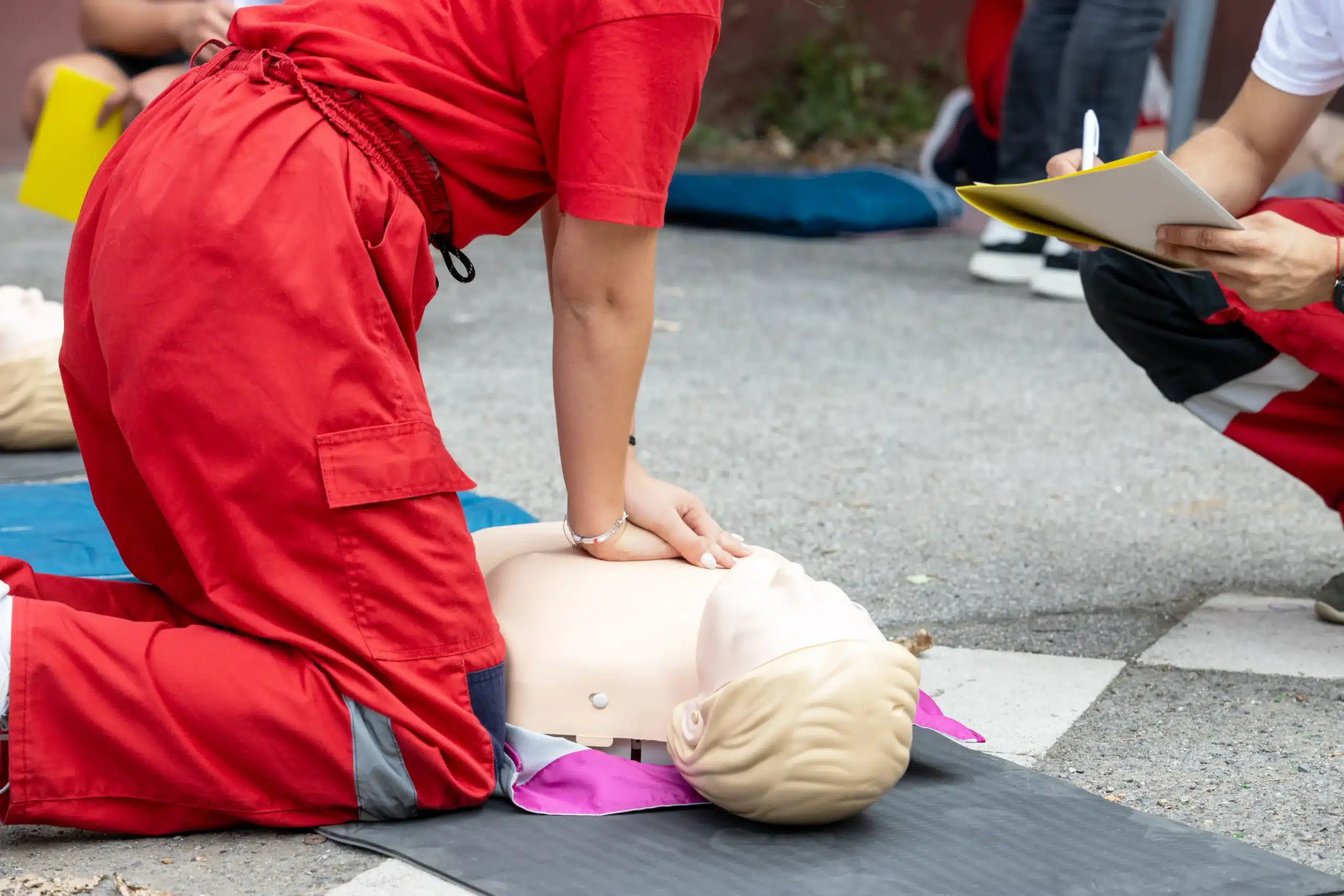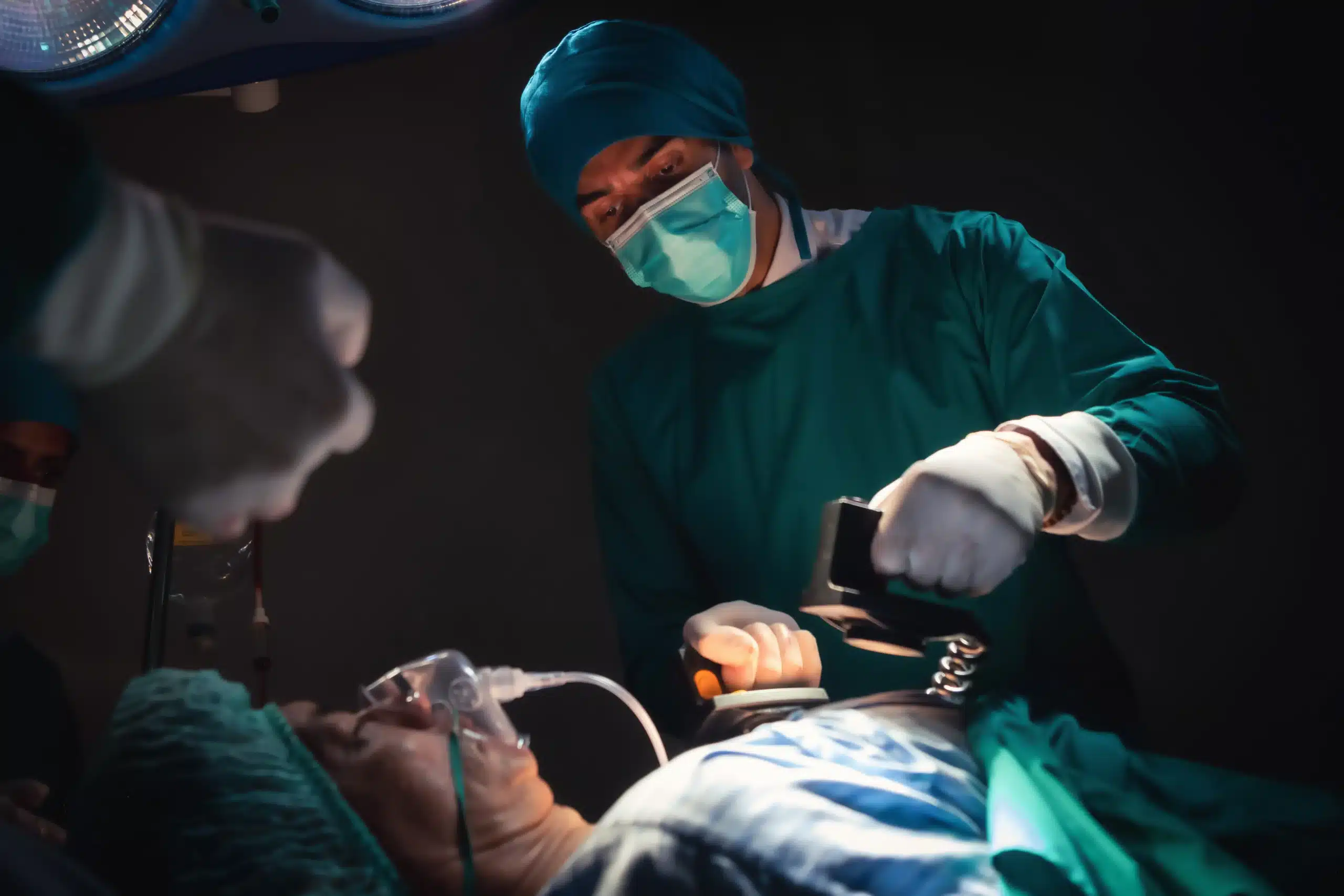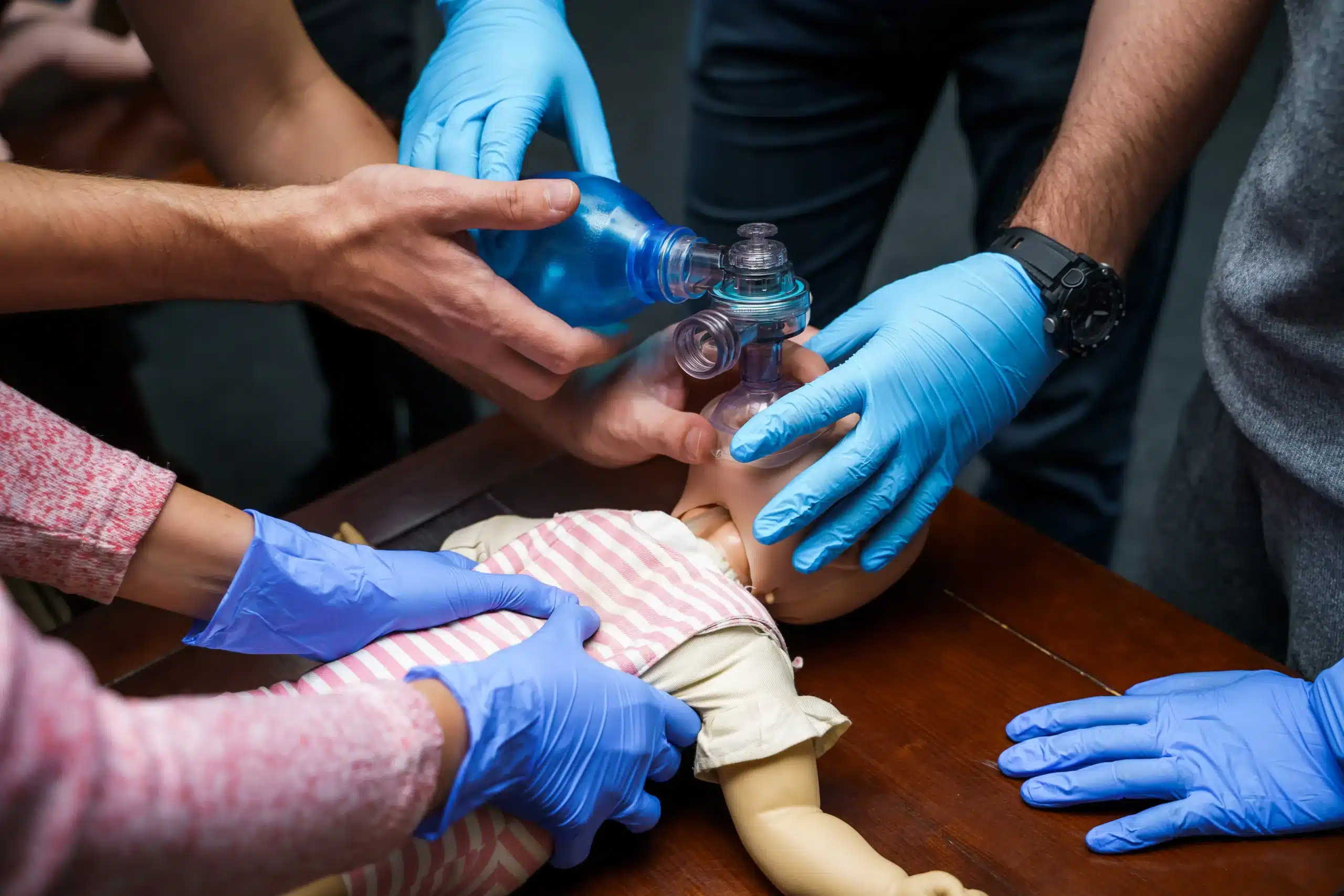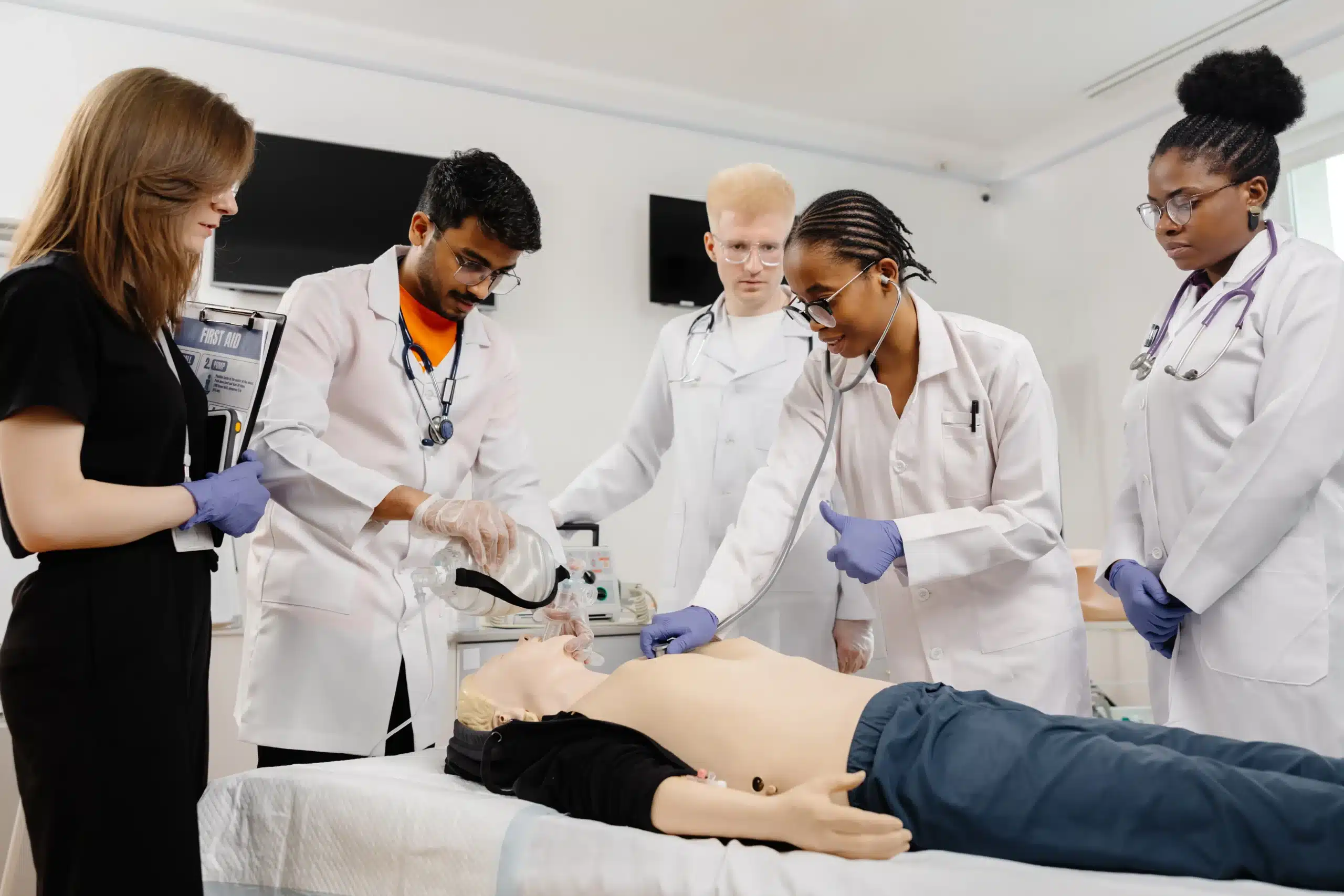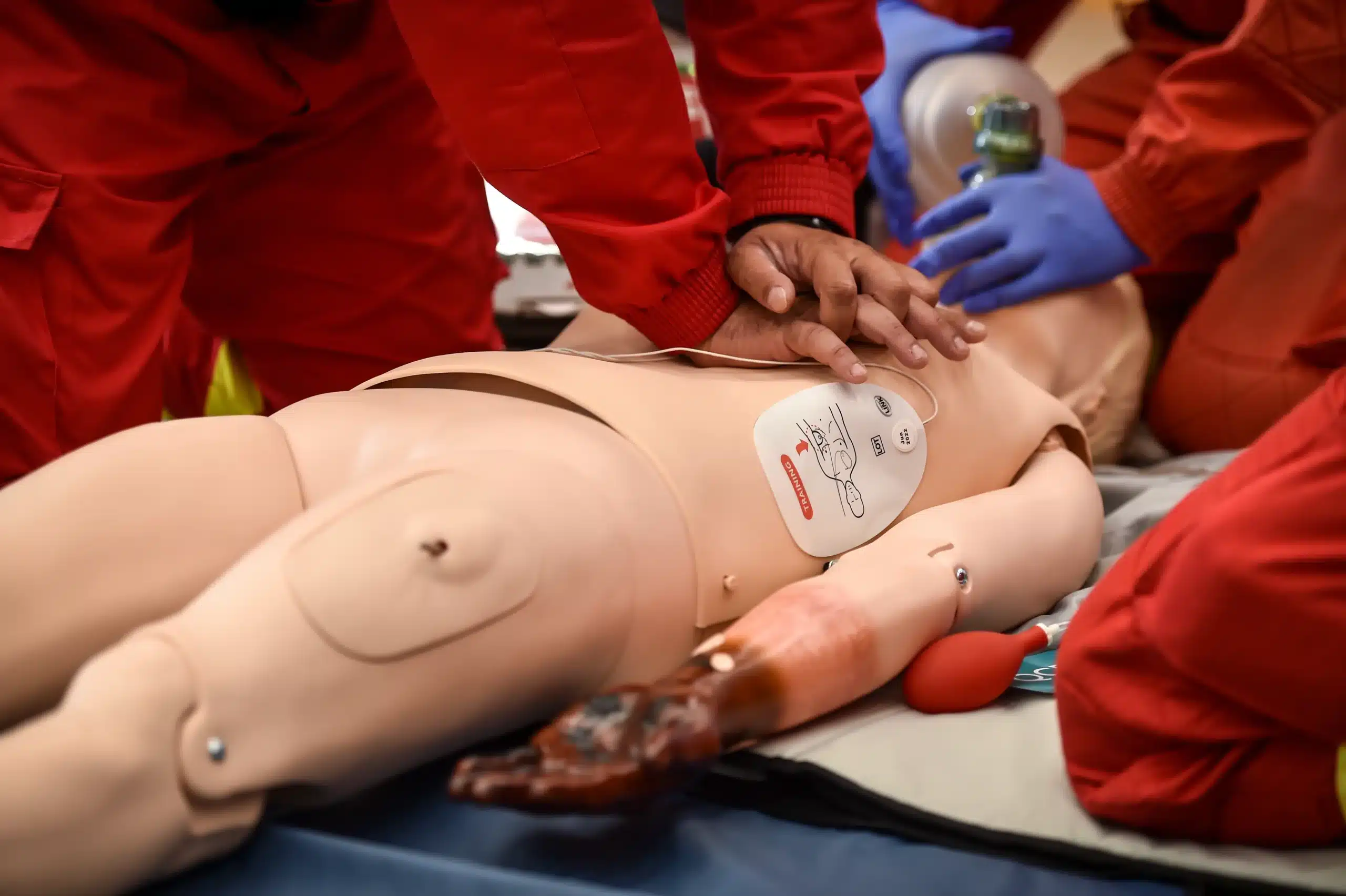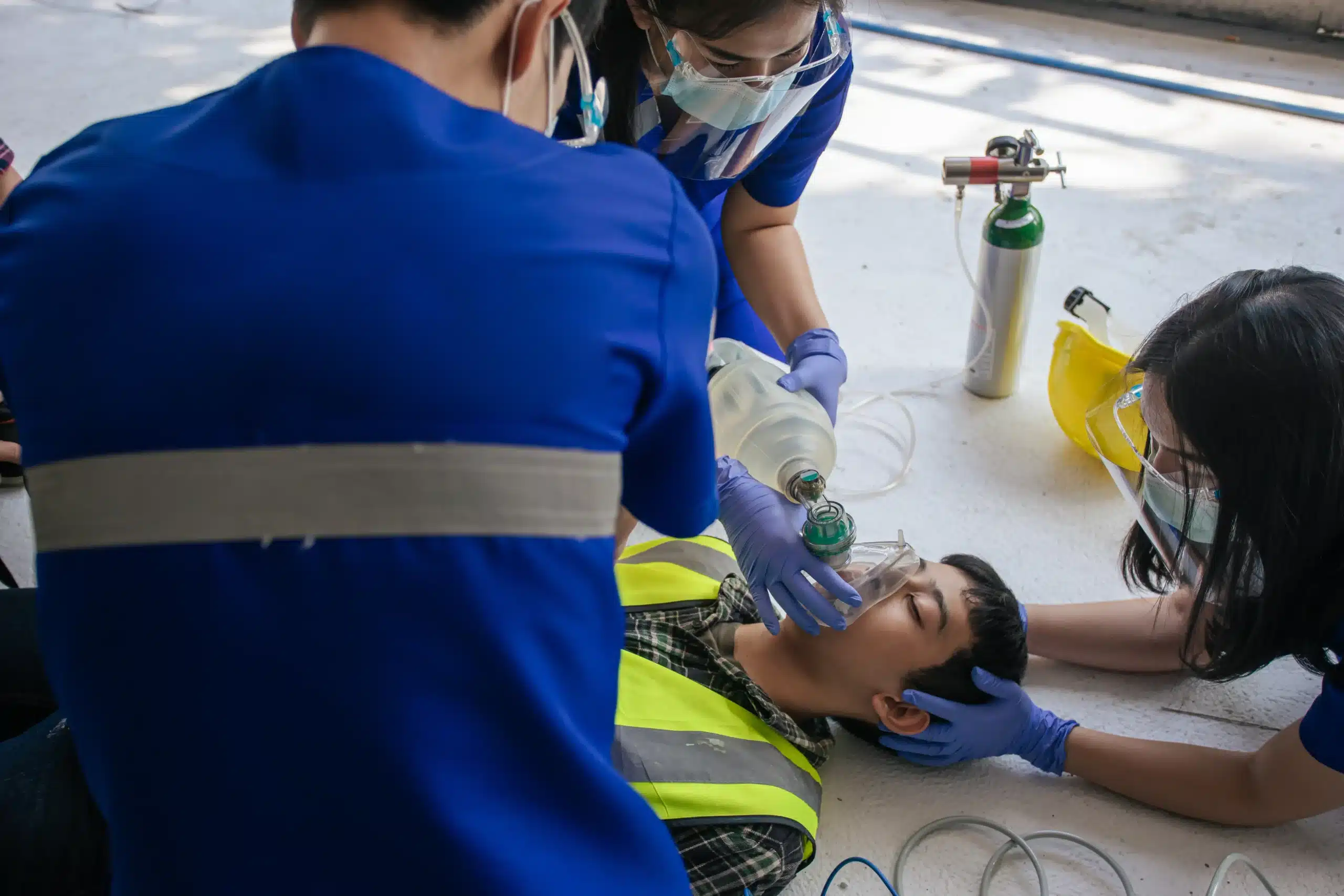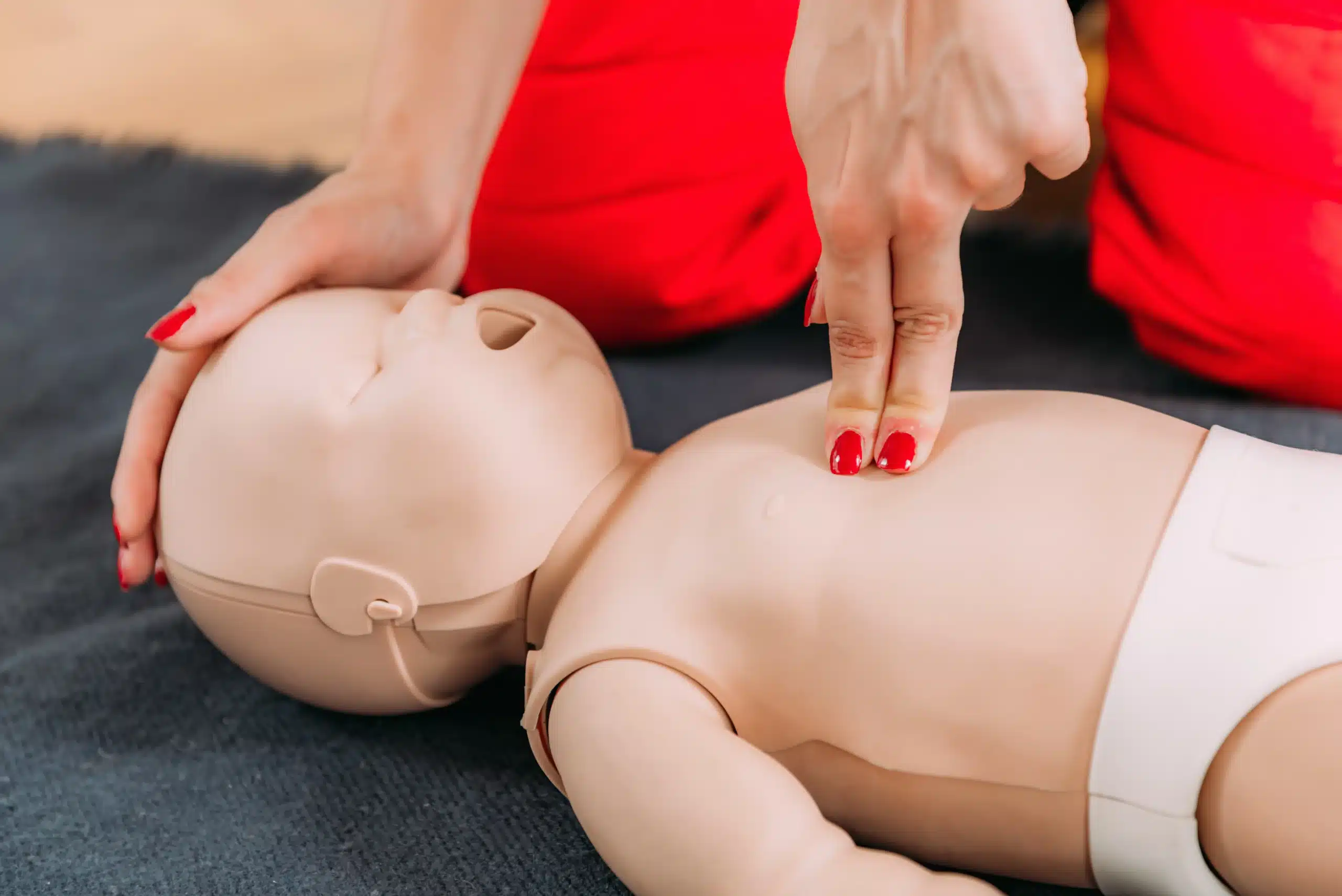Equipping yourself with CPR skills is an investment in yourself and your community. CPR certification not only prepares you to handle medical emergencies but also instills confidence and empowers you to act decisively when seconds count. This comprehensive guide will navigate you through the world of CPR certification, exploring the various courses available, the costs involved, and the long-term benefits of this invaluable skill. We’ll also provide practical advice on finding a “CPR certification near me” and ensuring you receive high-quality training from certified professionals. Join us as we demystify CPR certification and empower you to become a life-saver.
Key Takeaways
- CPR certification is a powerful tool: Equipping yourself with CPR training, whether basic or advanced (BLS, ACLS, PALS), empowers you to respond effectively during emergencies.
- Finding the right CPR course is simple: Consider your goals, schedule, and preferred learning style when selecting a course. Explore options from trusted providers like Safety Training Seminars, the American Heart Association, and the American Red Cross.
- Maintain and share your skills: Stay current with recertification to keep your skills sharp. Inspire others to learn CPR and contribute to a safer community.
What is CPR Certification & Why Does It Matter?
Learning CPR is a powerful step towards safeguarding your community. This section clarifies what CPR certification entails and underscores its significance.
What is CPR Certification?
CPR certification equips you with the skills to respond effectively during cardiac arrest. It involves learning chest compressions and rescue breathing techniques. While you can perform CPR without formal training, a certification course ensures you’re well-versed in the proper techniques and builds your confidence. These courses typically involve hands-on practice and instruction from certified professionals. This structured approach helps you provide assistance in critical situations.
Why is CPR Certification Important?
CPR certification matters because it empowers you to make a real difference. Knowing CPR can be the deciding factor between life and death for someone experiencing cardiac arrest. Real-life stories highlight the profound impact of CPR training. Every certified individual becomes a vital link in the chain of survival, ready to respond when seconds count. By becoming CPR certified, you gain a valuable skill and contribute to a safer community. Consider getting your CPR certification—it’s an investment in yourself and the well-being of those around you.
CPR Certification Courses: Which One is Right for You?
Choosing the right CPR certification course depends on your individual needs and career goals. This section breaks down the key differences between common CPR certifications to help you make an informed decision.
Basic Life Support (BLS)
BLS certification provides a comprehensive approach to medical care, encompassing CPR and more advanced techniques. You’ll learn skills like advanced airway management, how to use an automated external defibrillator (AED), and how to work effectively within a team during resuscitation. BLS certification is often a prerequisite for healthcare professionals and those seeking more advanced certifications like ACLS and PALS. If you’re in the San Francisco area, you can find BLS courses at Safety Training Seminars.
Advanced Cardiac Life Support (ACLS)
ACLS certification is tailored for healthcare providers who respond to cardiac emergencies. This advanced training covers complex interventions and the administration of medications, making it crucial for professionals in critical care settings. ACLS training goes beyond basic CPR and explores the complexities of cardiac arrest management.
Pediatric Advanced Life Support (PALS)
PALS certification focuses on the emergency care of infants and children. This specialized training equips healthcare providers with the skills to recognize and treat respiratory and cardiac arrest in young patients. PALS courses cover pediatric-specific protocols and best practices. PALS courses are available in San Francisco through Safety Training Seminars.
Heartsaver CPR/AED
Heartsaver CPR/AED courses are designed for people outside of the healthcare profession. This certification provides essential life-saving skills applicable to everyday situations. Heartsaver courses empower anyone to respond confidently during a medical emergency, making them valuable for parents, teachers, coaches, and anyone interested in learning CPR. You can explore more about these courses through the American Heart Association or the American Red Cross.
Find CPR Certification Near You
So, you’re ready to get CPR certified—fantastic! Finding the right class is easier than you think. Here’s how to locate CPR training near you:
Local Training Centers
Start by searching for local training centers. Many hospitals, community colleges, and dedicated CPR training providers offer in-person classes. Safety Training Seminars, for example, provides American Heart Association BLS, CPR, ACLS, and other safety training courses in cities across California. A quick Google search for “CPR classes near me” can uncover convenient options in your area.
Online Search Tools
Several websites specialize in connecting people with CPR classes. These online search tools allow you to filter by location, course type, and schedule, making it easy to find a class that fits your needs. CPR Near Me and the American Heart Association’s website are great resources to explore.
Community Resources
Check with your local fire department, recreation centers, or community organizations. They often host CPR training sessions or can point you in the right direction. Remember, CPR is a life-saving skill accessible to everyone, not just medical professionals.
Trusted Organizations
These well-known organizations offer reliable, high-quality CPR certification courses:
Safety Training Seminars
Safety Training Seminars offers American Heart Association (AHA)-certified CPR, First Aid, BLS (Basic Life Support), and ACLS (Advanced Cardiovascular Life Support) classes. They focus on excellent customer service and offer a low-price guarantee. Check their website for courses in San Francisco, Daly City, San Mateo, and Oakland. They also offer the RQI program and NRP courses in Concord and San Francisco.
American Heart Association
The American Heart Association sets the standard for CPR training. They offer a range of courses, from basic CPR to more advanced certifications like BLS, which is tailored for healthcare providers and includes CPR, AED use, and airway management techniques.
American Red Cross
The American Red Cross is another trusted source for CPR training. They provide various learning options, including in-person classes, online courses, and blended learning that combines online learning with in-person skills sessions.
National Safety Council
The National Safety Council also offers comprehensive CPR and BLS training programs. BLS certification provides a broader skill set than standard CPR, covering CPR, AED use, and more advanced airway management.
What to Expect During CPR Training
So, you’ve decided to get CPR certified—fantastic! Knowing what to expect can help you feel prepared and confident going into your training. Here’s a glimpse into a typical CPR class:
Course Format & Duration
CPR courses are designed to fit a variety of learning styles and schedules. You can find classes offered in-person, online, or through blended learning (a mix of online and in-person sessions). The in-person option provides hands-on practice and direct interaction with instructors. Online courses offer flexibility, allowing you to learn at your own pace. Blended learning combines the best of both worlds. For example, a BLS CPR course often involves online learning (about 1-2 hours) followed by a shorter in-person skills testing session (40-60 minutes).
Skills Assessment & Practice
Hands-on practice is at the heart of CPR training. In a typical class, you’ll work with a CPR training mannequin to practice chest compressions and rescue breaths. You’ll learn the correct hand placement, depth of compressions, and the rate at which they should be delivered. Beyond CPR, many courses cover other essential skills like recognizing medical emergencies and calling for help. Some courses, like Basic Life Support (BLS), also include training on using an AED and basic airway management techniques.
Certification Process & Validity
Once you’ve completed the course and demonstrated your skills, you’ll receive your CPR certification. This certification is typically valid for two years. To maintain your skills and keep your certification current, you’ll need to take a renewal course before it expires. While CPR training is valuable for anyone, a BLS course is often a better fit for healthcare professionals or those pursuing a career in healthcare. Choosing the right course depends on your individual needs and goals. You can learn more about the distinctions between BLS and CPR here.
CPR Certification: Cost & Value
Getting CPR certified is an investment in yourself and your community. Let’s break down the costs, explore potential discounts, and discuss the long-term value this training provides.
Average Course Costs
CPR certification costs vary based on the training level, your location, and the organization providing the course. Basic CPR and First Aid certification can range from $70 to $120. More advanced courses like BLS for healthcare providers typically range from $80 to $150. This fee usually covers the training materials, instruction, skills testing, and your official certification card. Remember, Safety Training Seminars offers a low-price guarantee, so you can feel confident you’re getting a great value.
Group Rates & Discounts
Many training centers offer discounts for group bookings, making it a cost-effective option for workplaces, community groups, or families learning together. If you have a group of 10 or more, it’s worth inquiring about potential discounts. Some organizations also offer discounts for students, seniors, or those renewing their certification. Check with your chosen provider, like Safety Training Seminars, to see available options.
Long-Term Benefits & Career Impact
The value of CPR certification extends far beyond the initial cost. Knowing you can potentially save a life brings invaluable peace of mind. CPR certification is often a job requirement, especially in healthcare, education, and childcare. A BLS certification demonstrates a higher level of proficiency and is often preferred for healthcare professionals. Whether you’re pursuing a healthcare career or simply want to be prepared for emergencies, CPR training is a worthwhile investment in your future. It can open doors to new opportunities and give you the confidence to act quickly and effectively in critical situations.
Choose the Right CPR Course
So, you’re ready to learn CPR—fantastic! Choosing the right course is the next step. It can feel a little overwhelming with so many options, but don’t worry. Here’s a simple breakdown to help you find the perfect fit.
Assess Your Needs & Goals
First, think about why you want CPR certification. Do you need it for your job, or are you learning for personal knowledge? Are you interested in basic CPR or more advanced training? Knowing your goals will guide your decision. And remember, even without mandatory certification, learning CPR is incredibly valuable. Consider your personal learning style too. Do you thrive in a group setting or prefer one-on-one instruction?
Compare Courses & Schedules
Once you have a general idea of your needs, start comparing courses. Look at the different types of CPR classes available. Do you prefer in-person instruction, online learning, or a blended approach? Think about what works best with your learning style and schedule. If you need certification for work, make sure the course meets OSHA requirements—many in-person classes offer this 2-year certification. Check the schedules and locations to find a course that fits your availability. Our CPR courses in San Francisco offer a variety of options to choose from. We also offer a low price guarantee, so you can find high-quality training that fits your budget.
Evaluate Instructors & Support
Finally, consider the instructors and the support offered by the training center. Hands-on practice is essential for developing CPR skills, so look for classes that include training with a CPR mannequin. This allows you to experience the proper technique and build your confidence. A good instructor can make all the difference in your learning experience, so check for reviews or testimonials if you can find them. Also, find out what kind of support is available after the course. Will you have access to refresher materials or be able to contact the instructors with questions? Learning CPR empowers you to potentially save lives, so choose a course that sets you up for success. Consider it an investment in yourself and your community.
Get the Most Out of Your CPR Certification
Getting your CPR certification is a fantastic achievement. But it doesn’t stop there. Here’s how to truly maximize your certification’s impact:
Use Your Skills
CPR is a real, life-saving skill, and it’s not just for medical professionals. Anyone can learn CPR and save lives. Don’t hesitate to use your skills if a situation arises. Think of it like this: you wouldn’t wait for a professional chef if you saw a grease fire in your kitchen, would you? You’d grab the fire extinguisher and take action. CPR is the same—it’s a skill meant to be used in emergencies. Even basic first aid knowledge can make a difference. Imagine a hiker using their CPR training on the trail—it could save a life. Read these real-life stories about how first aid and CPR training have made a difference.
Stay Current with Recertification
Like any skill, your CPR skills can fade over time. Regular recertification keeps you up-to-date on the latest techniques and guidelines. It’s the best way to stay sharp and confident in your abilities. That first step toward certification is crucial, as every CPR-trained person becomes a source of hope when facing sudden cardiac arrest. Don’t let your certification lapse—stay current and stay ready.
Inspire Others
Your decision to get certified can have a ripple effect. Share your experience with friends, family, and colleagues. You might be surprised how many people are interested in learning CPR but haven’t taken the first step. By learning CPR, you have the potential to save lives in your community and beyond. Sharing inspiring stories and emphasizing the importance of CPR training can inspire others to become CPR heroes themselves. Learn about the power of CPR and its life-saving impact. Your story could be the one that motivates someone else to get certified and potentially save a life.
Related Articles
- Why CPR is Vital in Healthcare
- CPR Certification in San Francisco: Your Complete Guide
- Find CPR Classes Near Me: Your Complete Guide
- CPR Training in San Francisco: Your Complete Guide
- CPR & First Aid Training in San Francisco: A Guide
Frequently Asked Questions
What’s the difference between CPR and BLS?
CPR focuses on chest compressions and rescue breaths, the core techniques for responding to cardiac arrest. BLS builds upon CPR by adding advanced airway management, AED use, and team dynamics during resuscitation. Think of BLS as a more comprehensive approach to life support, encompassing CPR and other essential skills.
How do I find a CPR class near me?
Finding a CPR class is easy! Start with a quick online search. Look for local training centers, community organizations, or use online search tools that specialize in connecting people with CPR courses. Many hospitals, community colleges, and dedicated CPR training providers offer classes. You can also check with your local fire department or recreation centers.
How much does CPR certification cost?
The cost of CPR certification varies depending on the course type, location, and training provider. Basic CPR courses typically range from $70 to $120, while more advanced certifications like BLS for healthcare providers can range from $80 to $150. Look for training centers that offer group discounts or special rates for students or seniors.
How long is CPR certification valid, and how do I renew it?
CPR certification is typically valid for two years. To renew your certification and keep your skills current, you’ll need to take a recertification course before it expires. Recertification ensures you’re up-to-date on the latest guidelines and best practices.
What if I’m nervous about using my CPR skills in a real emergency?
It’s completely normal to feel nervous about using your CPR skills in a real-life situation. Remember, the purpose of CPR training is to prepare you for such emergencies. Regular practice and recertification can build your confidence and help you react effectively under pressure. Even if you’re unsure, any attempt at CPR is better than none. You’ve gained valuable skills that could make a difference.


